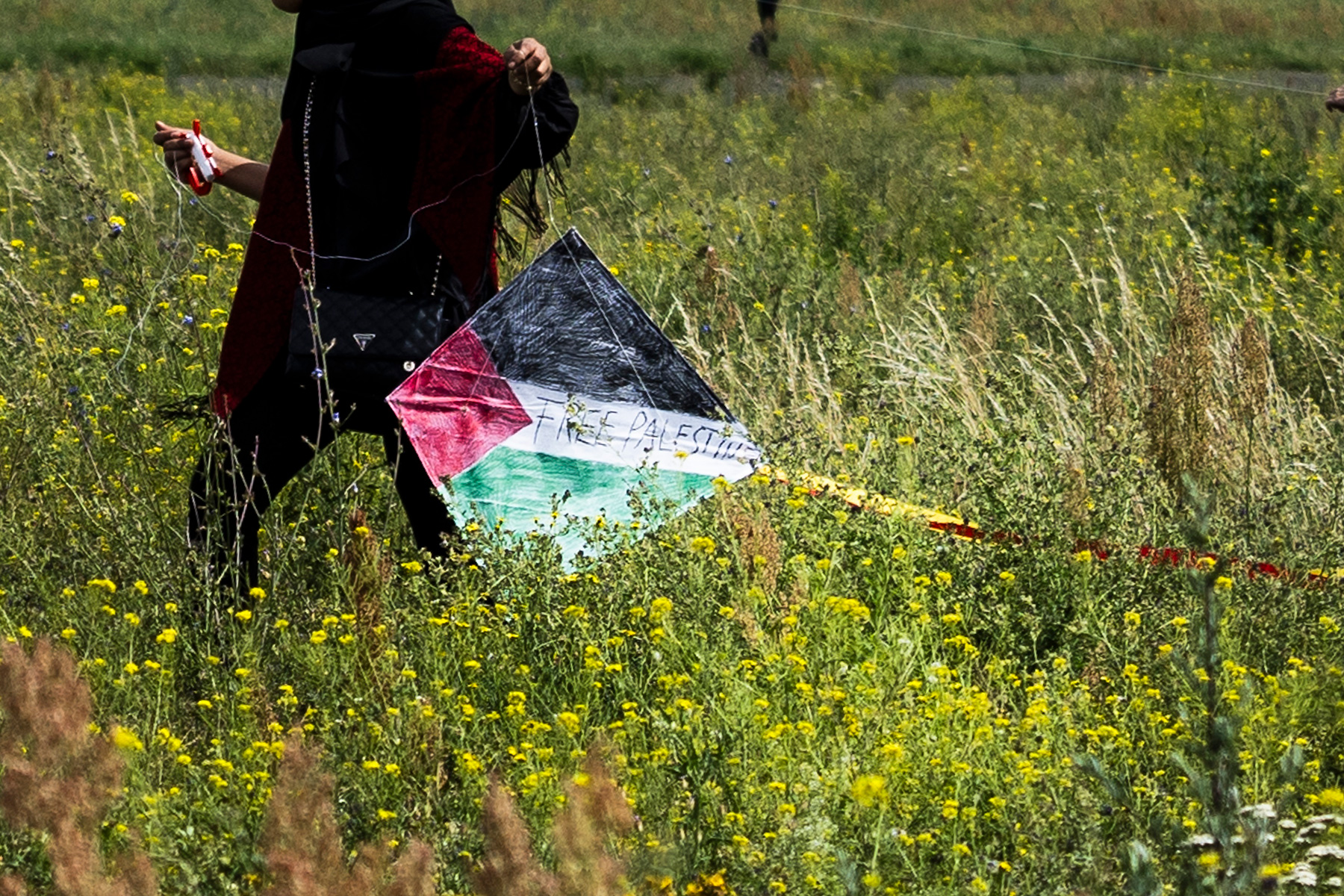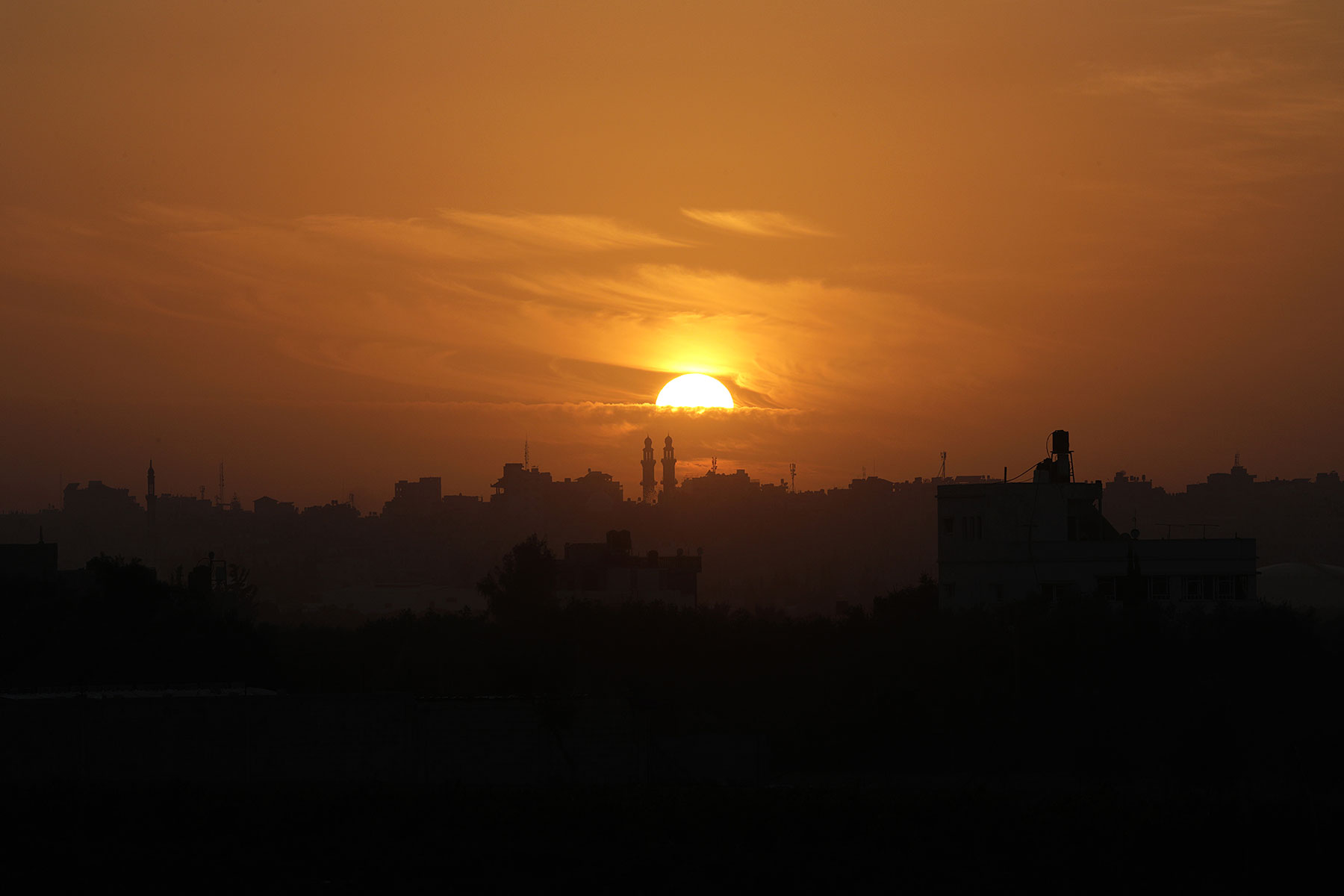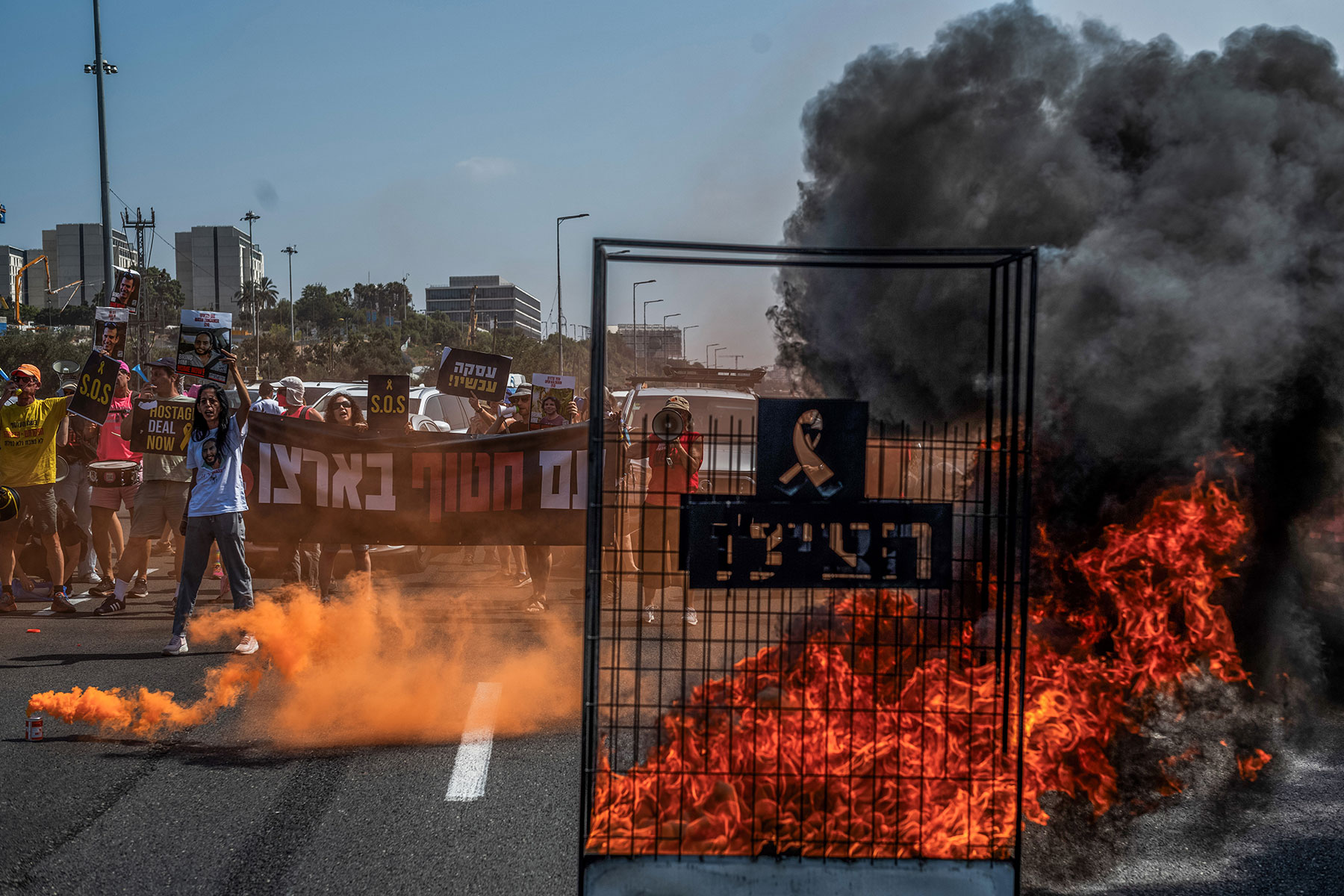The situation in the Middle East underscores the fragility of stability in the region. At the same time, over the past year, events have developed along trajectories that previously seemed unlikely. A year ago, it seemed to many that a powerful Israeli strike against Hezbollah could provoke direct Iranian involvement in the conflict. In any case, according to certain reports, the United States dissuaded Israel from launching a preemptive strike against Hezbollah for this very reason. A little more than a year ago, few could have imagined the scale of the October 7 attacks, given the perceived effectiveness of Israel’s security forces.
Conflict escalation in the Middle East could have serious consequences for the immediate participants, primarily Lebanon, and possibly neighboring states. In all likelihood, a vertical rather than horizontal escalation can be expected, involving other actors in the war. For various reasons, Arab countries are not ready to escalate tensions with Israel, nor do they want to spoil their relations with Iran. The risk of the Iran-Israel confrontation escalating into a full-scale regional war seems rather limited at this point in time.
However, there are risks that the Iran-Israel confrontation may enter a new stage. Tehran's response to the Iranian attack depends on what Israel's response will be. Iran would like to “save face”, and it would probably be satisfied with an outcome similar to what was observed after the Iranian attack in April 2024, when both sides formally declared success. However, if Israel's strike on Iran is too harsh, Iran will be forced to respond. It is no coincidence that the United States has sent additional forces to the Middle East, including several thousand troops and fighter jets, and extended the presence of aircraft carrier strike groups in the region. In addition, the United States has deployed the THAAD anti-missile system in Israel, indicating that the US is preparing to engage in repelling possible threats to the State of Israel.
At the same time, some countries are already beginning to face the humanitarian consequences of the current escalation. If the scale of the Israeli operation in Lebanon changes, the socio-economic situation in the country could deteriorate sharply. Middle Eastern countries risk facing a new humanitarian crisis. Also, the conflict between Israel and Hezbollah, in addition to the confrontation between Iran and Israel, has notably impacted the economic situation in the region, negatively affecting business activity in the Middle East.
It seems that the actions of non-state actors—particularly the Yemeni Ansar Allah movement – serve as a factor that can also influence the situation in the region. As the events of the last year have shown, non-state actors play a special role as independent variables of conflicts in the Middle East.
In the autumn of 2024, the situation in the Middle East sharply escalated. Sporadic exchanges between Hezbollah in Lebanon and Israel, which had been observed since the October 7, 2023, attacks, evolved into active hostilities. On September 17–18, 2024, pagers and other means of communication belonging to Hezbollah members were detonated inside Lebanon. Israel then launched operation “Northern Arrows” in Lebanon, aiming to significantly weaken Hezbollah. In the weeks that followed, virtually all the movement's top leaders were eliminated, including its head, Hassan Nasrallah. In turn, on the evening of October 1, Tehran responded by launching a mass missile attack on Israel.
The fighting in the conflict zone between Israel and Hezbollah is far from over. In addition, it is reported that Israel is preparing to strike Iran. The continuation of the fighting and the uncertainty over a possible Israeli response makes it very difficult to discern possible regional implications. Too much depends on the scale of Israel’s operation in Lebanon: the behavior of non-state actors with a high degree of autonomy, Israel’s response to an Iranian attack, and many other parameters. The Middle East remains quite vulnerable to “black swans” or hard-to-predict events, sometimes significantly affecting regional dynamics. Nevertheless, it remains crucial to identify the trajectories for any possible developments in conflict and Middle East.
Will more Arab states become involved in the war?
Based on rational expectations, a major war capable of engulfing the entire Middle East region seems unlikely at this time. From this point of view, the possible position of the Arab states in the event of an escalation is worth considering.
Even in the case of a scaled-up Israeli operation against Hezbollah, Arab countries are unlikely to be willing to show a high degree of solidarity with Lebanon. The situation with regard to Arab-Israeli relations is not comparable to what it was, for example, in the early 1970s. So far, Egypt, Jordan, Bahrain, Morocco, and the UAE have established official relations with the Jewish state. In 2023, there were reports that Saudi Arabia and Israel may sign an agreement to normalize bilateral relations, which was actively promoted by the United States. However, after the Hamas attack on Israel last October 7, Saudi Arabia suspended its participation in these negotiations. Gulf Cooperation Council (GCC) countries are interested in economic and technological cooperation with the Jewish state, including the need to carry out the technological modernization of their national economies.
This is compounded by the fact that several Arab states seem to be somewhat wary of the Islamic Republic of Iran’s (IRI) regional policy. It is no coincidence that in the 2010s, the US promoted its “Arab NATO” project. It was assumed that within the framework of this association, Arab countries would contain the “Iranian threat” in cooperation with Israel. Much has changed since then; in the spring of 2023, Iranian-Saudi relations were normalized with the assistance of China. However, despite this, GCC states and Iran have yet to build a trusting relationship on issues related to regional security.
It is also noteworthy that Jordan was reportedly involved in repelling an Iranian missile attack on Israel in April of this year. After the missile attack on Israel in October, new reports of Jordan’s air defense forces intercepting Iranian missiles and drones surfaced.
Iran has reportedly warned GCC states against assisting Israel in carrying out attacks on the IRI, in particular by granting it airspace. According to several reports, GCC states are refusing to grant it to Israel. Thus, they will likely try to remain neutral in the event of a possible regional escalation.
Will Syria become involved?
The probability of the Syrian Arab Republic (SAR) becoming involved in the war deserves special attention. Despite the fact that Syria has territorial claims against Israel (the Golan Heights were occupied by Israel during the Six-Day War in 1967), one can hardly expect that the SAR is now ready to go to war with the Jewish state. This is due, among other things, to the internal challenges Syria faces today. Syrian authorities now control only two-thirds of the country's territory. In addition, Syria faces various socio-economic problems. According to the UN, more than 1.5 million Syrians are in need of humanitarian assistance. Also, anti-government protests sporadically erupt in the SAR (e.g., in Suweida in August 2023). Unresolved internal issues serve as a significant constraint to escalating relations with Israel, as it poses additional threats to Syria.
Additionally important is that Syria’s territory has been repeatedly attacked by Israel over the past few years. Though most of the strikes were against Iranian military facilities, over the past year, many targets now include diplomatic institutions. For example, in April 2024, a missile hit the diplomatic quarter of Mezzeh in western Damascus. As a result, several people were killed, including two high-ranking generals of the Islamic Revolutionary Guard Corps. The strike prompted a retaliatory Iranian attack on Israeli territory, the first direct Iranian action against the Jewish state.
Strikes on Syrian territory were also carried out after a sharp escalation in the conflict zone between Israel and Hezbollah. In recent weeks, Israel has struck a border checkpoint on the Syrian-Lebanese border and a number of sites on Syrian territory because Iran has been supplying arms to Hezbollah through the territory of the Syrian Arab Republic.
Thus, even though Syrian authorities have no desire to be involved in a war, Syria could become a battleground for Iran or Israel to counter each other. The Israeli strike on the diplomatic quarter of Damascus in April of this year and Iran's response demonstrated that Israeli strikes on Iranian targets in Syria have the potential to escalate tensions.
Why is Iran officially avoiding war with Israel?
Iran, according to a number of experts, has no interest in a direct war with Israel. Now the Islamic Republic is facing internal socio-economic challenges, largely caused by sanctions that have been imposed on the IRI. In fact, after the start of the Israeli operation against Hezbollah, Iranian President Masoud Pezeshkian stated at a UN General Assembly meeting that his nation desires to establish security partnerships with other countries. He also empathized the need to resume negotiations with the parties to the nuclear deal. In this way, the Islamic Republic is looking for ways to lift sanctions on Iran, which has put significant pressure on the country's economy. Apparently, resolving this very issue remains one of Tehran's key foreign policy priorities. It is clear that a direct war with Israel would not only nullify possible negotiations with the United States on the nuclear program but could also become a reason for the introduction of new anti-Iranian sanctions.
The geographical distance of these countries is another controlling factor for Israel and Iran to engage in war. Currently, there is no probability of a direct clash between the Israeli and Iranian armies. This means that a possible conflict between Iran and Israel will most likely be in the realm of missile strikes, drone attacks on enemy territory, and pinpoint actions against one another.
At the same time, this does not mean that a war between Israel and Iran should be completely ruled out. For the moment, Iran is showing restraint and is clearly seeking to avoid involvement in the conflict. However, the escalation of tensions can be involuntary and uncontrollable: it can be a result of some chain reaction, a “black swan” or a random, hard-to-predict event. Additionally, much will depend on Israel's response to the Iranian attack. In such a case, not only can a vertical escalation be expected, as observed today between Israel and Hezbollah, but also a horizontal escalation may take place, with a potential of expanding the war zone.
How will the fighting affect the humanitarian situation in the Middle East?
Tensions along the Lebanese-Israeli border have created certain humanitarian problems over the past year. At least 60,000 Israeli border community residents have been evacuated due to Hezbollah shelling northern Israel.
Over the past few months, the humanitarian situation has also deteriorated inside Lebanon due to Israel's strikes on Lebanese territory. Since the IDF offensive began, the humanitarian situation in Lebanon has become more dire.
It is important to note that the intensified fighting, which has led to a deterioration of the humanitarian situation in the conflict zone, has been superimposed by the severe economic crisis that Lebanon is experiencing. The economic crisis started in 2019, and in 2020, it was exacerbated by the coronavirus pandemic and its Eurobond default. Lebanon now has high levels of poverty and unemployment, with the IMF estimating the state debt to be 283% of the GDP in 2022. The Lebanese economy is further pressured by the presence of 1.5 million Syrian refugees in the country. By comparison, Lebanon's population is only 5.3 million.
Currently, there are significant risks of a worsening humanitarian situation in Lebanon. The humanitarian consequences of the conflict depend on the form and scale of the operation that Israel will undertake in the country. Limited engagement would worsen the humanitarian situation in Lebanon, while a full-scale war with a hypothetical occupation of southern Lebanon could trigger a humanitarian catastrophe. In that case, not only would a significant number of Lebanese leave their homes, but also, at least, part of the Syrian refugees currently stationed in Lebanon. At the same time, the humanitarian situation in the region remains difficult; there are 3.7 million refugees in Turkey alone, of whom 3.1 million are Syrians.
More than one million Lebanese have already fled their homes, while 100,000 Lebanese and Syrian refugees have already moved to neighboring Syria. The number of refugees could increase significantly in the coming weeks and months.
What impact will the conflict have on business activity in the region?
The conflict in the Middle East is already having a negative impact on businesses in the region. The fighting is destroying infrastructure in some countries. Iran's strike on Israel has led to airspace closures in several countries in the region. In the short term, a reduction in tourist flows to Middle Eastern countries can be expected, as well as a deterioration in the investment climate. After the end of the war, challenges to post-conflict reconstruction will be relevant for some countries, namely Lebanon.
It is likely that the war between Israel and Hezbollah will increase the activity of non-state actors that are part of Iran's “Axis of Resistance”, particularly the Yemeni Ansar Allah movement. In October 2023, the Houthis began shelling ships traveling through the Red Sea and Gulf of Aden that they believe belong to countries supporting Israel. According to a S&P report, approximately 12% of world trade passed through the Red Sea, accounting for approximately 30% of all containerized traffic. Notably, approximately 40% of trade between Asia and Europe passed through the area. Due to actions taken by the Ansar Allah movement, global supply chains were disrupted. Some ships were forced to bypass high-risk areas by going around Africa, which increased the cost of shipping goods.
Ansar Allah’s activities in the Red Sea and the Gulf of Aden over the past year has shown that a worsening situation in that area could have not only regional but also global implications. Any conflict or escalation in the area could lead to a reduction in revenues for several countries, including Egypt, for which an operational Suez Canal remains an important source of budgetary revenue.
***
The situation in the Middle East underscores the fragility of stability in the region. At the same time, over the past year, events have developed along trajectories that previously seemed unlikely. A year ago, it seemed to many that a powerful Israeli strike against Hezbollah could provoke direct Iranian involvement in the conflict. In any case, according to certain reports, the United States dissuaded Israel from launching a preemptive strike against Hezbollah for this very reason. A little more than a year ago, few could have imagined the scale of the October 7 attacks, given the perceived effectiveness of Israel’s security forces.
Conflict escalation in the Middle East could have serious consequences for the immediate participants, primarily Lebanon, and possibly neighboring states. In all likelihood, a vertical rather than horizontal escalation can be expected, involving other actors in the war. For various reasons, Arab countries are not ready to escalate tensions with Israel, nor do they want to spoil their relations with Iran. The risk of the Iran-Israel confrontation escalating into a full-scale regional war seems rather limited at this point in time.
However, there are risks that the Iran-Israel confrontation may enter a new stage. Tehran's response to the Iranian attack depends on what Israel's response will be. Iran would like to “save face”, and it would probably be satisfied with an outcome similar to what was observed after the Iranian attack in April 2024, when both sides formally declared success. However, if Israel's strike on Iran is too harsh, Iran will be forced to respond. It is no coincidence that the United States has sent additional forces to the Middle East, including several thousand troops and fighter jets, and extended the presence of aircraft carrier strike groups in the region. In addition, the United States has deployed the THAAD anti-missile system in Israel, indicating that the US is preparing to engage in repelling possible threats to the State of Israel.
At the same time, some countries are already beginning to face the humanitarian consequences of the current escalation. If the scale of the Israeli operation in Lebanon changes, the socio-economic situation in the country could deteriorate sharply. Middle Eastern countries risk facing a new humanitarian crisis. Also, the conflict between Israel and Hezbollah, in addition to the confrontation between Iran and Israel, has notably impacted the economic situation in the region, negatively affecting business activity in the Middle East.
It seems that the actions of non-state actors—particularly the Yemeni Ansar Allah movement – serve as a factor that can also influence the situation in the region. As the events of the last year have shown, non-state actors play a special role as independent variables of conflicts in the Middle East.








